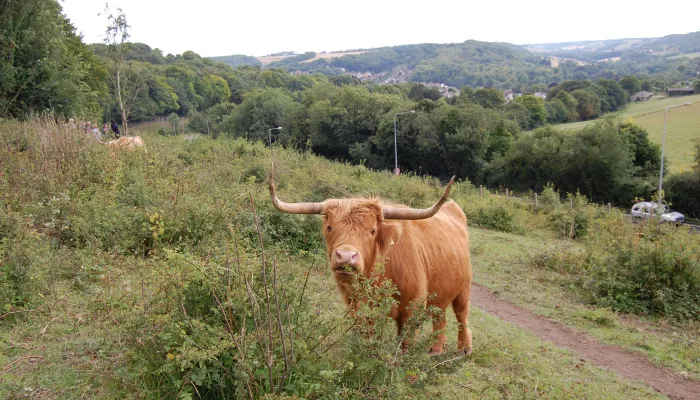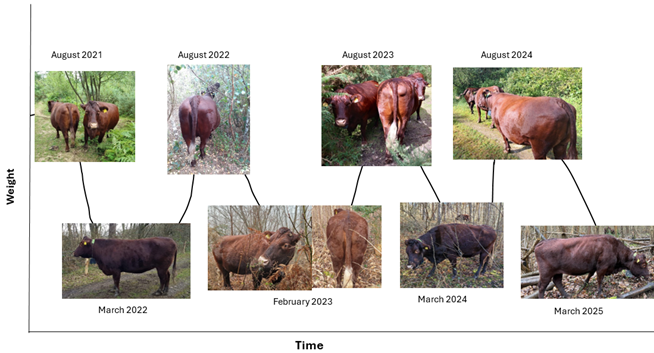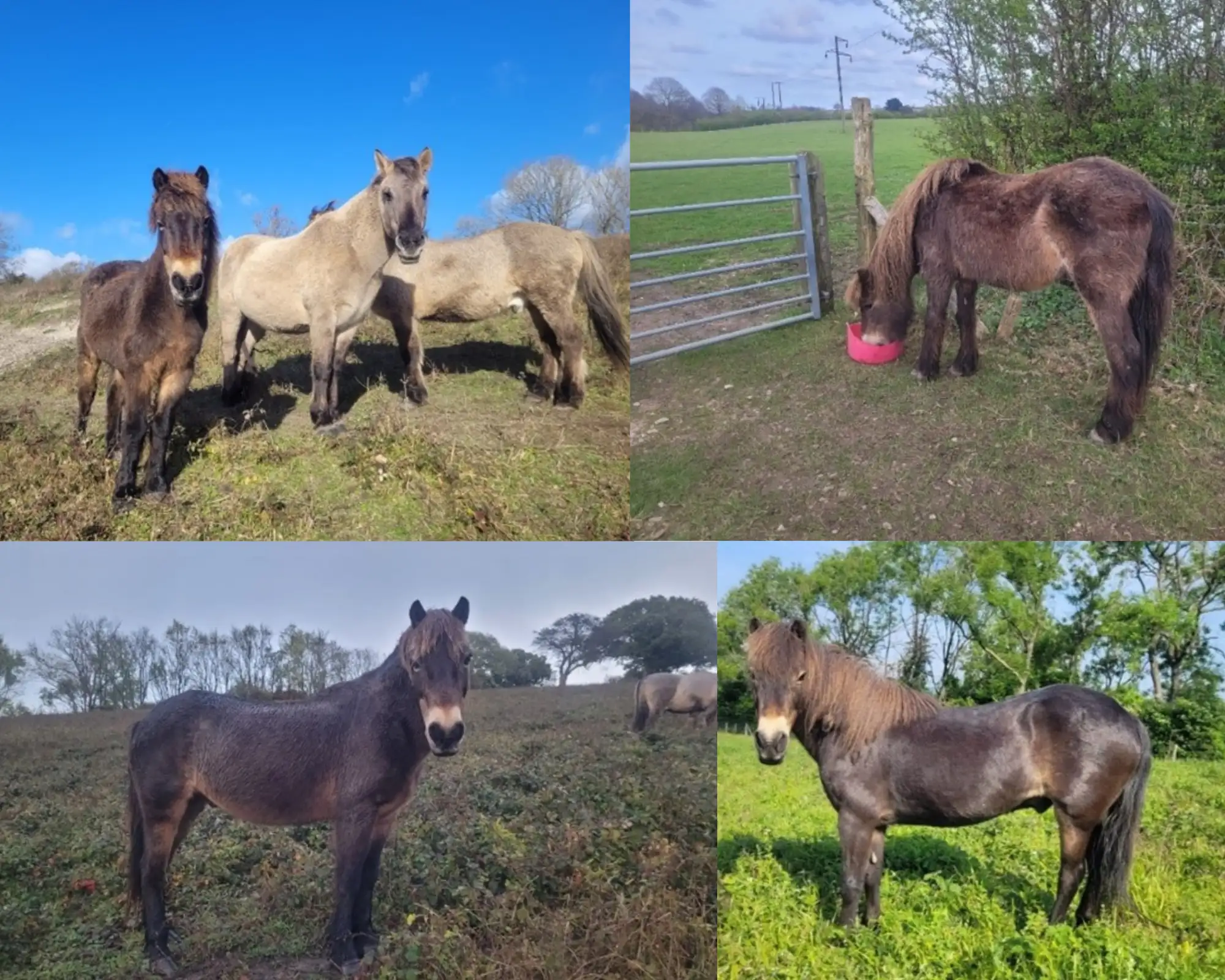Condition scoring
If you have pets you may have seen condition scoring charts in vets as a means of monitoring a dogs or cats weight. Unlike our grazers, the ideal weight for pets remains constant. They can act as a useful general guide (as seen in the image) but as dogs come in all shapes and sizes vets need a prior knowledge of what to be looking for in different breeds to accurately score them. For example, labradors and greyhounds are both classed as large dogs but they look very different!
- Prominent backbone
- Prominent hip and shoulder bones
- Clearly visible ribs
- Tail-head area recessed
- Skeletal body outline
- Visible backbone
- Visible hip and shoulder bones
- Faintly visible ribs
- Tail-head area slightly recessed
- Bony body outline
- Hip bones faintly visible
- Ribs generally not visible
- Tail-head area not recessed
- Body outline almost smooth
- Hip bones not visible
- Well covered ribs
- Tail-head area slightly lumpy
- Body outline rounded
- Hip bones showing fatty deposit
- Ribs very well covered
- Very lumpy tail-head area
- Body outline bulging because of fat
The same principle applies when we are condition scoring our own animals. Our staff and livestock checker volunteers are specially trained to recognise condition scores of each of our species, an example of cattle condition scoring can be seen in the image below. Similarly as in dogs, different breeds of cattle look different, as can be seen in the images of a dexter cow and a Sussex cow below. The Sussex cow is at a condition score of 2.5 and the dexter cow is at a condition score of 3.
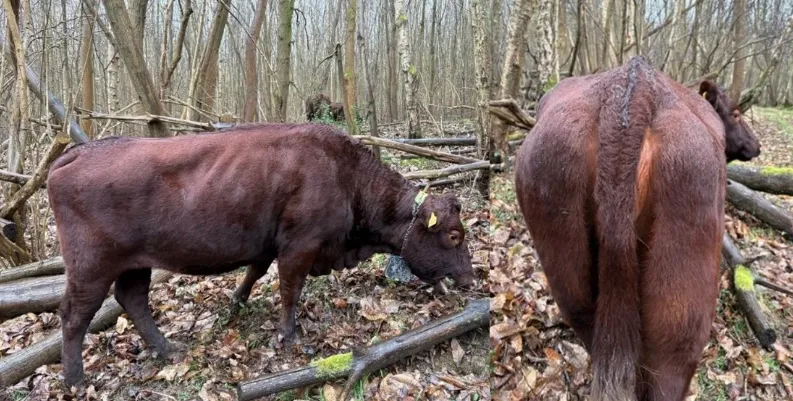
A Sussex cow
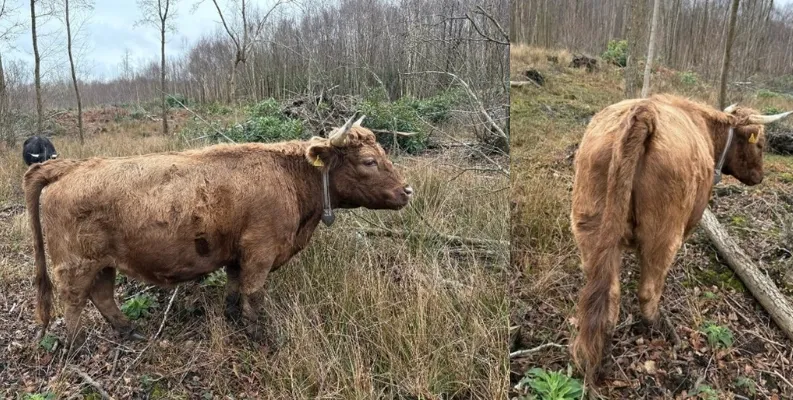
A dexter cow
In the winter months when checking our animals are still at a healthy weight, we use condition scoring. Generally, we don’t want our animals to fall below a condition score of 2 in winter months. A condition score of 2 is good in winter as it prepares the animals bodies for the rush of sugary vegetation they will be eating come spring. This can look different for different species and breeds of animal.
Ideally, we want our animals to fluctuate between a condition score of 2 in the winter (preparing their bodies for the spring flush) and up to a 3 or 4 in summer (enough weight to get them through the winter). Excess weight can be an issue for ponies in particular as it can cause joint problems. Being overweight can also make ponies prone to diseases like laminitis, which occurs when a pony’s body incorrectly processes the intake of sugar. Laminitis is when the laminae (tissue) in the hooves swell making it very uncomfortable for them to walk; in a similar way it feels for us if we wear shoes that are too tight!
Unlike our ponies out on the reserves doing conservation grazing, horses that are used in riding and other working conditions require extra feed throughout winter to keep them at a constant weight, so they have enough energy to perform their tasks.
Case study – Sussex cattle at South Blean
Our Sussex cattle on our South Blean reserve are an example of animals that remain on the same site year-round, thus, their weight patterns follow the growth patterns of the on-site vegetation.
Over the winter the cows lose condition and reach a stable body condition score of 2.5 as they survive on the hardier vegetation in the woodland such as ivy and bramble.
When the spring flush arrives, the cows will eat the lush grass and leaves off trees and reach a body condition score of about 4 to prepare them for the winter to come.
Case study – Tawny (Exmoor pony)
Tawny is an Exmoor pony that has been grazing on Kent Wildlife Trust reserves for the past 20 years. Due to his old age he now struggles on our more challenging reserves in the winter with body condition. Last winter he was grazing in Wouldham Valley with two Konik ponies and they were doing a great job at removing the dogwood and other hardy plants there. However, due to the colder weather, and it being more difficult for Tawny to chew hardier plants (as he has fewer teeth now), he was losing a lot of condition. We began to supplementary feed him chaff and pony hard feed and when his condition did not significantly improve he was taken offsite, along with the two Koniks and moved to Queendown Warren where we continued to supplementary feed him. As vegetation grew up in the spring, we stopped his supplementary feed and he has now significantly improved condition on the fresh, lush grass on site. Over this winter, he remained at Queendown and he did not need any supplementary feed as he maintained a good body condition score throughout. His mobility has also much improved with his improved condition.

